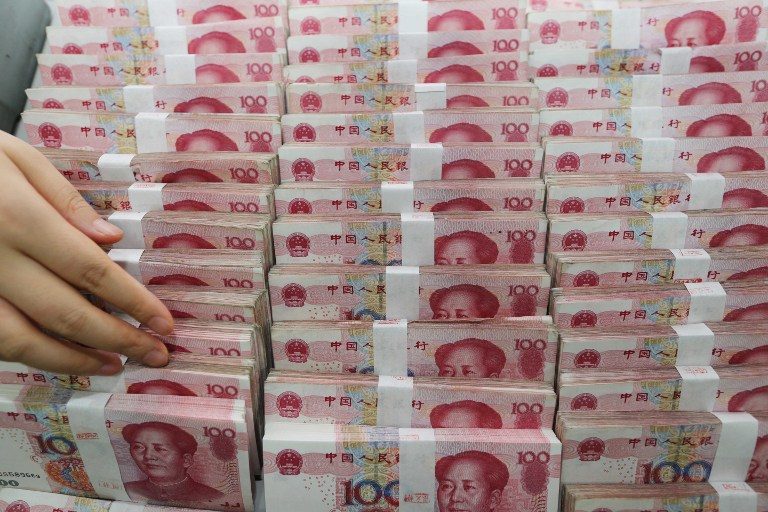SUMMARY
This is AI generated summarization, which may have errors. For context, always refer to the full article.

MANILA, Philippines – The Bangko Sentral ng Pilipinas (BSP) has added China’s currency, the yuan Renminbi (RMB), to the country’s list of official international reserves on the back of the Asian giant’s growing economic clout both globally and in the country.
BSP Governor Amando Tetangco Jr announced in a statement on Monday, October 24, that the Monetary Board officially approved the holding of RMB as part of its gross international reserves (GIR) effective October 13.
The move means that the BSP may now hold the currency to ensure that it’s available in the banking system when needed.
At present, the country’s GIR is held in various currencies, mainly the US dollar, International Monetary Fund (IMF) Special Drawing Rights (SDR), and gold.
Earlier this month, the RMB was also formally included in the IMF’s elite basket of SDR currencies, a global standard of international reserve that is also made up of the US dollar, Japanese yen, British pound, and the euro, which the BSP said was a factor in the decision.
Rising economic importance
The BSP also pointed out that China’s growing economic links with the country was taken into consideration.
The central bank noted that Philippine exports to China rose by 7.9% from $5.7 billion in 2010 to $6.2 billion in 2015. In the first 7 months of 2016, China ranked as the 4th largest destination of Philippine exports, with a value of $3.2 billion and a 10.2% share of total exports.
Beginning in 2013, China has also become the biggest source of Philippine imports, which have more than doubled from $4.6 billion in 2010 to $11.5 billion in 2015. In the first 7 months of the year, imports from China were valued at $8.4 billion and accounted for 18.5% of total imports.
China, it added, also ranked as the second biggest visitor market for the Philippines last July, based on statistics from the Department of Tourism.
President Rodrigo Duterte also just wrapped up a state visit to China last week which produced numerous agreements for Chinese firms’ involvement in planned big-ticket infrastructure projects in the Philippines.
The country’s foreign reserves hit a record high of $85.9 billion last August. – Rappler.com
Add a comment
How does this make you feel?
There are no comments yet. Add your comment to start the conversation.